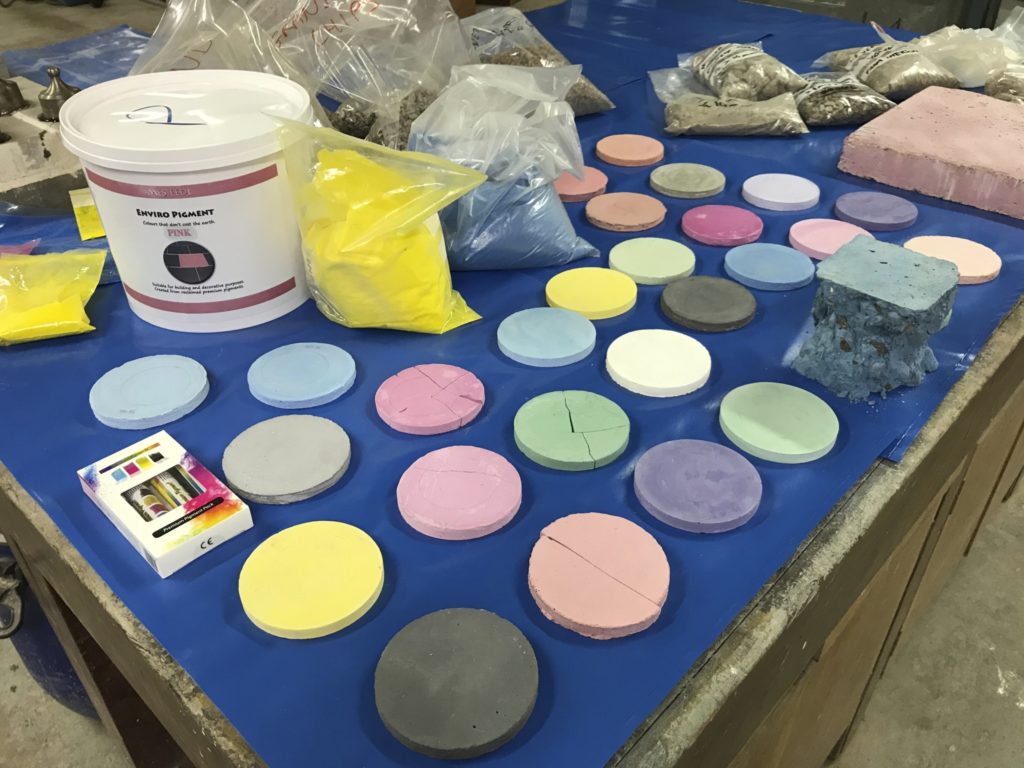
A method for recycling remaining toner powder in old printer cartridges into cheaper and more versatile colourant for concrete has been found.
The Dundee University School of Science team, led by Dr Moray Newlands, worked alongside Moock Environmental Solutions and Inverurie Precast to create a method that allows for a range of colours within concrete and cement to be produced without affecting the integrity of the finished substance.
Dubbed recovered toner power (RTP), the team believe that mass production using RTP would cost significantly less than other methods and allow for a wider range of tints to be added to concrete and cement. Furthermore, they say that the industry standard of waterproofing buildings using vapour-retarding membranes or pore blockers would no longer be required, as RTP samples were shown to stand up in both dry and wet environments, whilst the colouring also proved resistant to ultraviolet light.
Dr Moray Newlands, said, “Around 10% of toner remains in a cartridge at the end of its life, so we’ve been looking at ways in which we can utilise it and prevent it being sent to landfill. Toner powder is incredibly fine, but cannot be recycled into new cartridges as it goes through thermal cycles and changes size once it is involved in the printing process.
“Inverurie Precast is producing samples which we are testing to see how they resist water and how strong they are. As engineers, the main thing we’re concerned with is ensuring that the properties of the concrete remain similar or are improved by adding colour to it. If that is the case then architects will be able to use it as they wish.”
Jennifer Smart, business relationship manager at Construction Scotland Innovation Centre, which funded the project, said, “This project is just one of many that demonstrates how industry and academia is working together to drive innovation, and CSIC is delighted to be supporting this exciting development. The product offers not only an environmental solution to a potential waste problem, but has the potential to reduce ongoing structure maintenance costs due to its waterproofing benefit, in addition to using colour in creative and interesting ways.”








